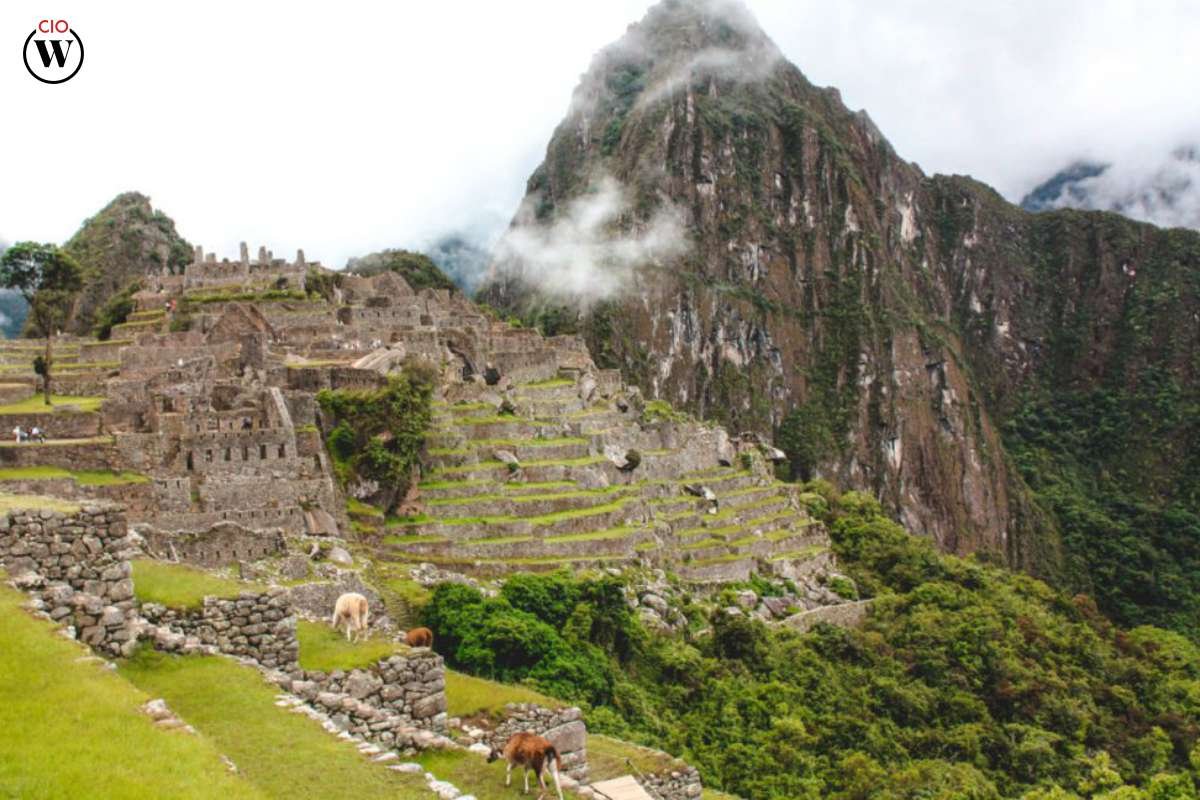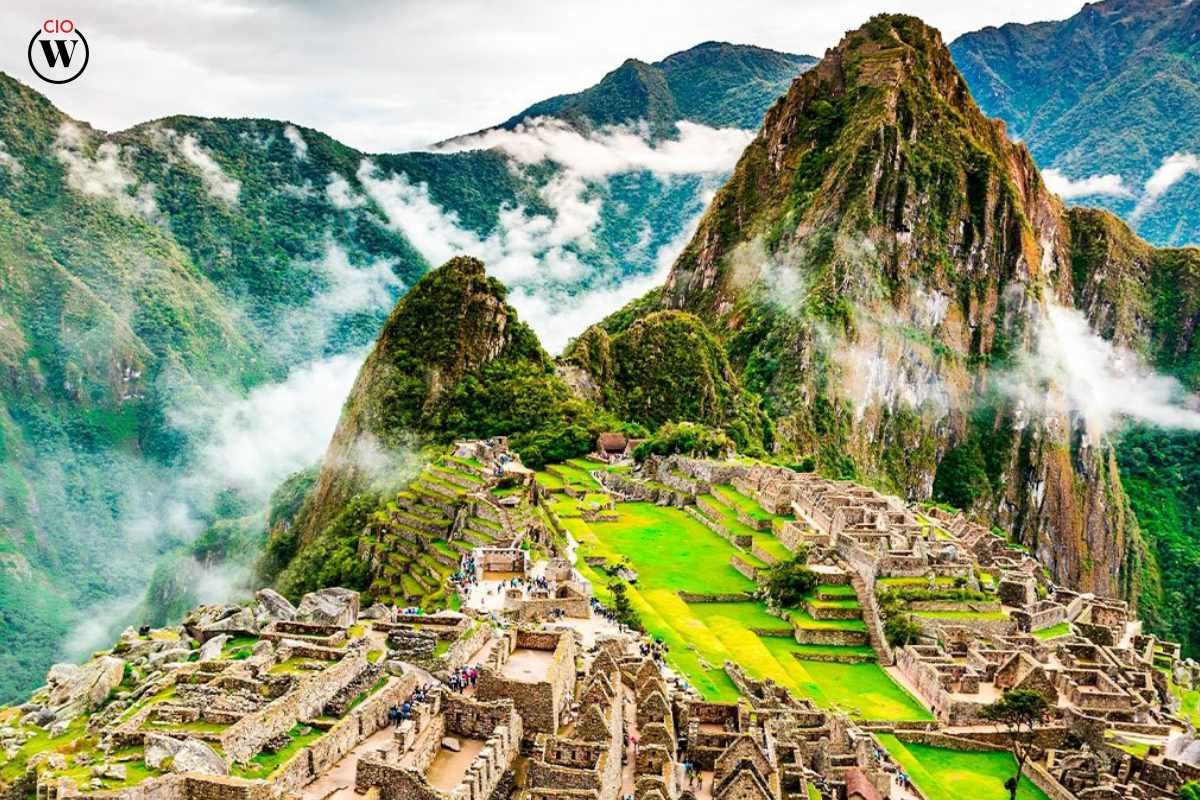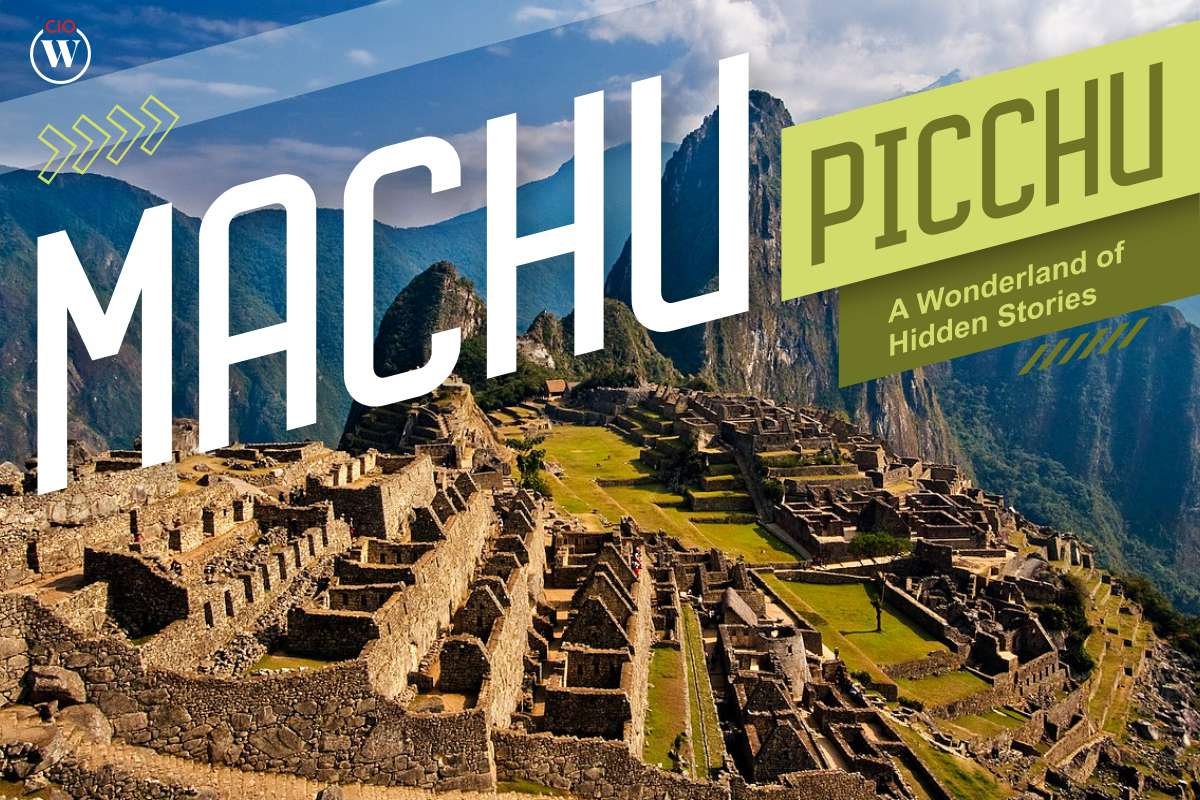With every step, I lost a small fraction of my consciousness. I was intoxicated. The breeze traveled long through the mountains and seas and peeped through the gaps between the stones at Machu Picchu. As if the air was the catalyst between the centuries-old walls and the story of the hands that made them. It whispered in my ears, unclear and camouflaged with the sweet smell of the mountains.
After several failed attempts I gave up, and those whispers transformed into melodies like a French song. However, this was just the beginning, as the perfectly engineered stones turned into alphabets and the walls became a paragraph, each portraying stories. Stories of the people who lived here cooked food, and danced all night long under the twinkling stars.
Machu Picchu is a place of mystery bundled up in the beauty of nature. Its rich history and the untamed culture based on the womb of nature makes it one of the best place to visit. Not just travelers and explorers admire it, but also adored by architects, archaeologists, and researchers worldwide. However, a lot about this place is unknown, and questions are flung like why it was abandoned. What and whom was it built for? This article is the answer to all of these questions and the ultimate guide for the one who dreams of traveling to this paradise.
Tales of the Past
Nestled in the rocky countryside northwest of Cuzco, Peru, Machu Picchu is believed to be a royal estate or sacred Inca site. It remained hidden for centuries after the fall of the Inca civilization to Spanish invaders in the 16th century. The sprawling citadel spans 5 miles, featuring over 3,000 stone steps connecting its diverse levels.
Built during the height of the Inca Empire in the 15th and 16th centuries, it was likely abandoned around a century later, coinciding with the Spanish conquest in the 1530s. While there’s no evidence of direct Spanish attacks, some speculate that its residents left due to a smallpox epidemic.
Modern archaeologists lean towards Machu Picchu serving as a royal estate for Inca rulers, though many theories exist, suggesting it might have been a religious site or even a hub for trade, testing new crops, a women’s retreat, or a city for royal coronations. The mysteries surrounding this place continue to captivate, leaving room for various interpretations of its historical purpose.
Stumbling Hiram

“In the summer of 1911, I, an American archaeologist, Hiram Bingham, set foot in Peru with a small team of explorers. Our mission was to find Vilcabamba, the last Inca stronghold to fall to the Spanish. On foot and by mule, we ventured into the Urubamba Valley, where a local farmer told us about ruins atop a nearby mountain called Machu Picchu, meaning “old peak” in Quechua. On July 24, after a challenging climb in cold weather, I, along with a group of peasants led by an 11-year-old boy, discovered the stone terraces marking the entrance to Machu Picchu.”
“Excited about this find, I shared it in a popular book, “The Lost City of the Incas,” attracting tourists to the once-obscure Inca Trail. I excavated artifacts from Machu Picchu, sparking a custody dispute with Yale University, where I took the items for inspection. While I’m credited for making Machu Picchu known globally, it’s uncertain if I was the first outsider to visit, as evidence suggests others may have explored the site earlier but were less vocal about their discoveries.”
These would have been the very words of Hiram Bingham, the real-life Indiana Jones if he was still alive. Reaching the top of this old peak, he pulled out his notebook and wrote, “Fine ruins….fine houses, streets, stairs”, took some photos, and left soon after, convinced he had seen all there was to see.
An Engineering Enigma
Hiram Bingham was right about the Inca being skilled engineers, as seen in his 1913 observations. Luckily, he was also a good photographer, and his 1930 photo of the Agricultural Sector and the intact canal, abandoned for over three centuries, proves the Inca’s engineering prowess.
The photo displays a 1 percent grade reach of 31 meters. Bingham’s 3-D drawing of the community in 1930 reveals the canal aqueduct over the “Dry Moat” and the lost aqueduct, emphasizing the Inca’s hydraulic engineering capabilities. Despite Bingham’s limited time in 1912 at Machu Picchu, he acknowledged the Inca’s extraordinary skills in planning and designing water supply systems, showcasing their ability to harmonize nature with human needs through accumulated knowledge and expertise.

New symphony
Enough about the history, it is now time to discuss the present situation of Machu Picchu. Ever since it was designated as one of the New Seven Wonders of the World in 2007, it has become the most visited attraction and South America’s most famous ruins, welcoming hundreds of thousands of people a year. As a UNESCO World Heritage Site since 1983, led to a drastic increase in tourism, hence the development of nearby towns and environmental degradation. This increased number of visitors also endangered the home to several diverse species. As a result, the Peruvian government has taken steps to protect the ruins and prevent erosion of the mountainside in recent years.
Best Parts of Machu Picchu
During the tour, I witnessed some of the most fascinating parts wrapped in architectural beauty, each telling a story. It has a total of 196 tourist spots, including archaeological sites, squares, temples, water fountains, monuments, and residences. All are intricately connected with the natural surroundings. The citadel is divided into two distinct sectors by a 400-meter wall. One focused on agriculture with terraces and farmer houses, and the other urban featured the Royal Residence, the Sacred Plaza, and the Intihuatana Pyramid with a solar clock. Here is the list of the parts each contributed to my intoxication.
| The Temple of the Condor | The Temple of the Sun |
| Home to a large rock shaped like the Andean bird, a symbol of power and fertility.Part of the Inca trilogy with the puma and the snake.It is believed to be a site for celebrating and worshiping rituals. | A sacred space dedicated to adoring and worshiping the Sun god.Access was restricted to priests and the elite of the Inca Empire.Used for making offerings and paying homage to the powerful celestial entity. |
| Intihuatana | Huayna Picchu |
| Renowned monolithic sculpture in Machu Picchu, functioning as a solar clock.Used shadows to create an astronomical calendar, measuring time and marking the seasons.Significant in defining the beginning and end of each year’s seasons. | The mountain towering at 2720 meters, serves as a surveillance center for Machu Picchu.Provided a panoramic view of the valley, enabling the Incas to detect potential attacks.Known as the Old Mountain, features carved stairs leading to the summit. |
| The Sacred Rock | |
| Enormous monolith with dimensions reaching three meters in height on a seven-meter base.One of the most mystical symbols and is believed to have astronomical significance.Speculated to be oriented for the study of stars. |
 Source- roamandthrive
Source- roamandthriveA Natural Wonderland Beyond History
Machu Picchu is more than a historic site, it’s a haven for diverse and exotic flora and fauna. Nestled between the Andes and the Peruvian Amazon, with the Urubamba River flowing through it, the sanctuary supports a rich biodiversity. Among the inhabitants are the Andean fox, puma, vizcacha, spectacled bear, and white-tailed deer, complemented by over 420 bird species. These include the striking cock of the rocks and the majestic Andean condor.
With more than 30,000 hectares of wooded areas, steep mountains, and snow-capped peaks, it boasts diverse tree species. Notably, the sanctuary is a floral paradise, hosting 370 types of orchids, making it the world’s largest collection of native orchids, as recognized by the American Orchid Society.
Best Time to Visit
Machu Picchu remains open year-round, with October to April being the official rainy season, though rain is possible at any time. Peak crowds are in July and August, and Sundays, when locals from the Cusco province visit for free, tend to be the busiest. There is no ideal time to visit due to consistent crowds and unpredictable weather.
During the rainy season, mornings are often foggy, which can either obscure or enhance the view depending on personal preference. Afternoons may see fewer visitors as day-trippers head back to Cusco. However, I was lucky enough to witness the melting sun from this high altitude as the stars seemed even closer.
The Inca Trail and Other Treks
An adventurous option to reach Machu Picchu from Cusco is by joining an organized multi-day trek on the Inca Trail, part of the extensive network of Incan roads. While it may seem challenging, thousands like me choose this option to trek annually. Numerous tour operators provide Inca Trail hikes with different durations and comfort levels all involving camping. Keep in mind that the Inca Trail is closed for maintenance every February.
- Salkantay Mountain:
- Height: Approximately 20,574 feet (6,271 meters)
- Trek Time: Typically 4 to 7 days, depending on the chosen route and tour operator.
- Choquequirao:
- Height: Approximately 10,010 feet (3,050 meters)
- Trek Time: Generally 4 to 5 days, though longer trekking options are available.
- Lares:
- Height: Varies based on specific trekking routes within the Lares region. However, approximately can be 15,777 feet (4809 meters)
- Trek Time: Typically 2 to 5 days, depending on the chosen itinerary and starting point.

FAQs:
- When is the best time to visit?
The dry season from May to September is generally considered the best time to visit. However, it is open year-round.
- How do I get to Machu Picchu?
Most visitors travel to Cusco and then take a train to Aguas Calientes, known as the gateway. From Aguas Calientes, you can either hike up or take a bus to the site.
- Do I need to book tickets in advance?
Yes, it is advisable to book tickets in advance, especially during the peak season. Tickets have a daily limit, and they can sell out quickly.
- What should I wear and bring?
Wear comfortable and layered clothing. Bring a hat, sunscreen, water, comfortable shoes, and a camera. If you’re trekking, pack accordingly for the duration of your trek.
- Is there an age limit for visiting Machu Picchu?
There is no specific age limit. However, it’s essential to consider the physical demands, especially if planning to hike or climb.
- Are there guided tours available?
Yes, guided tours are available, providing insightful information about the history and significance of the site.









